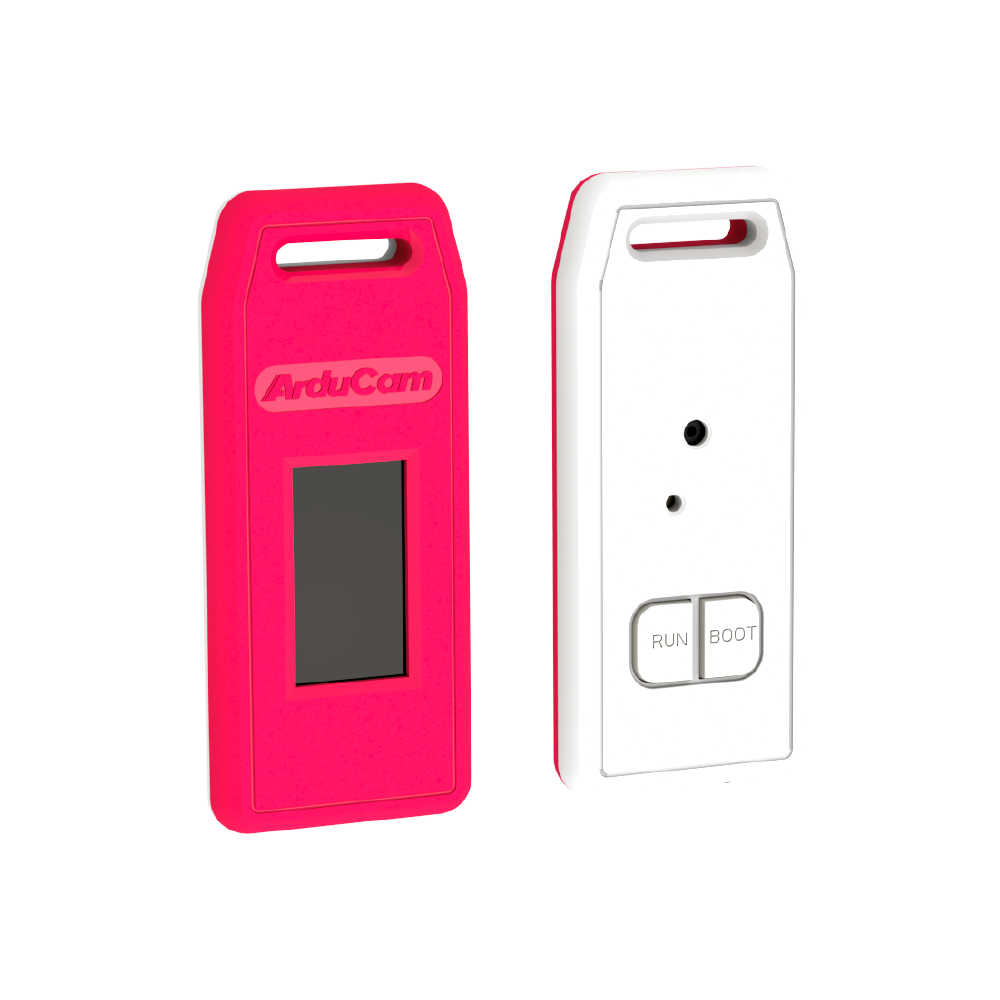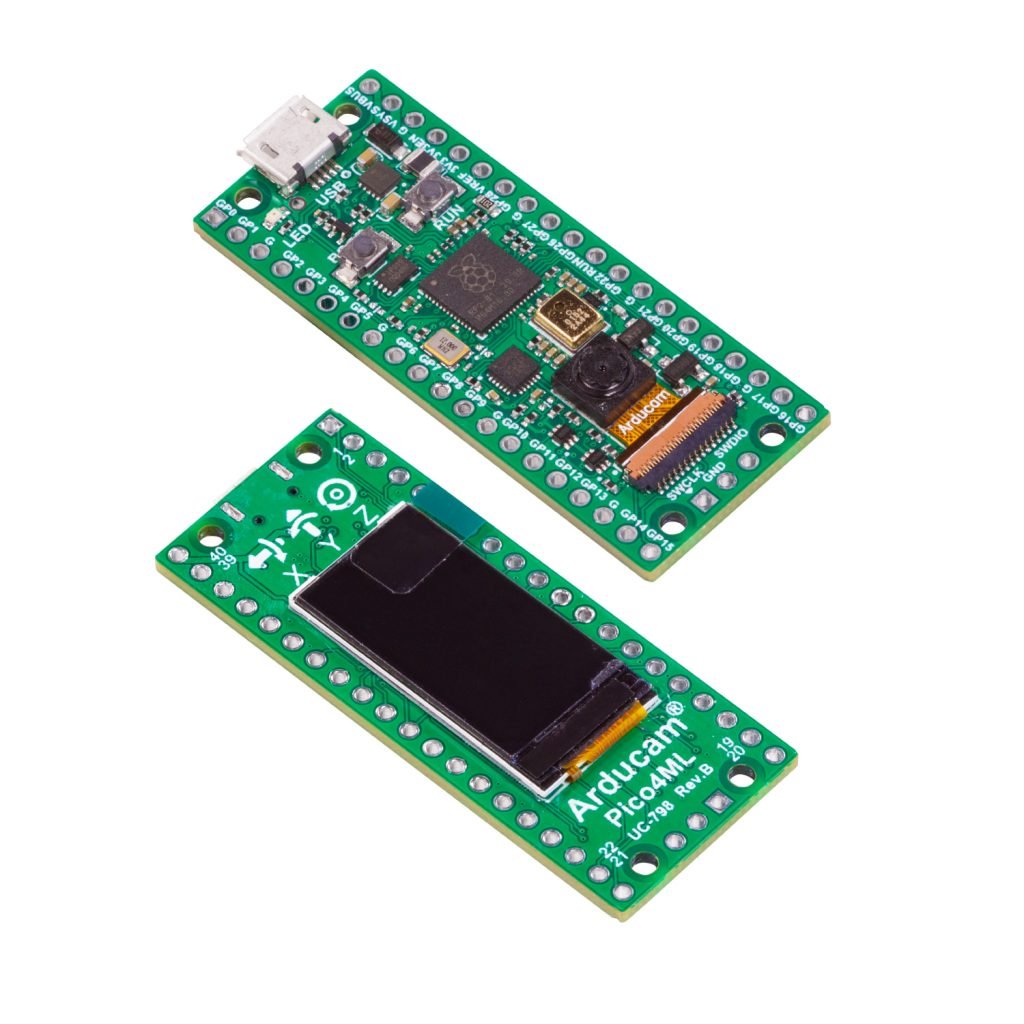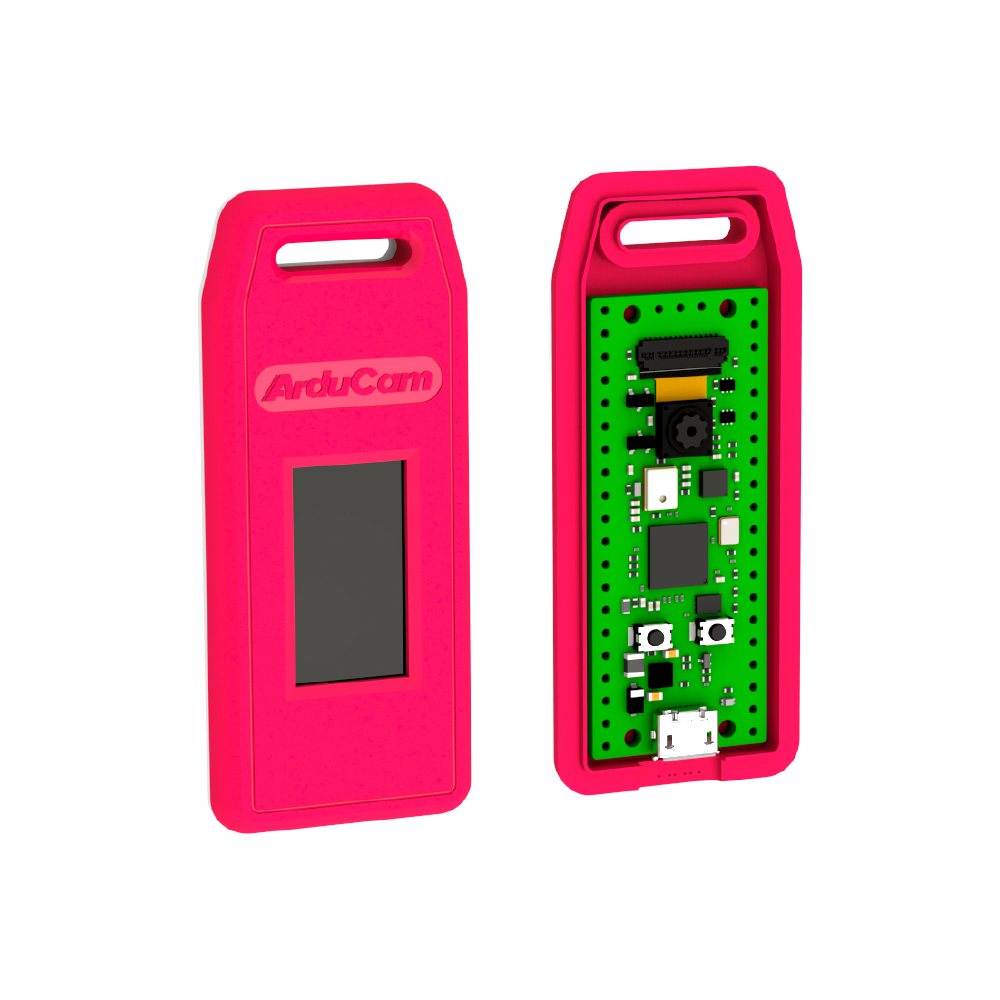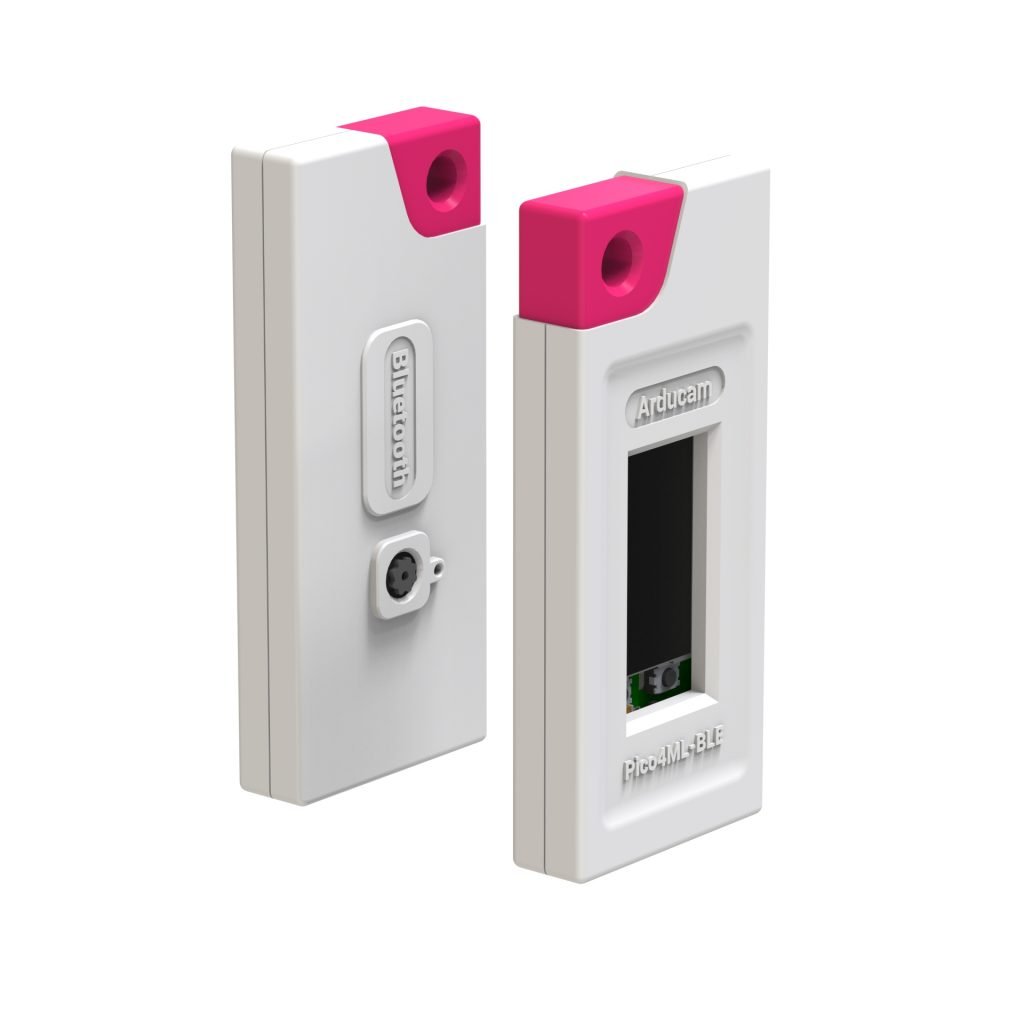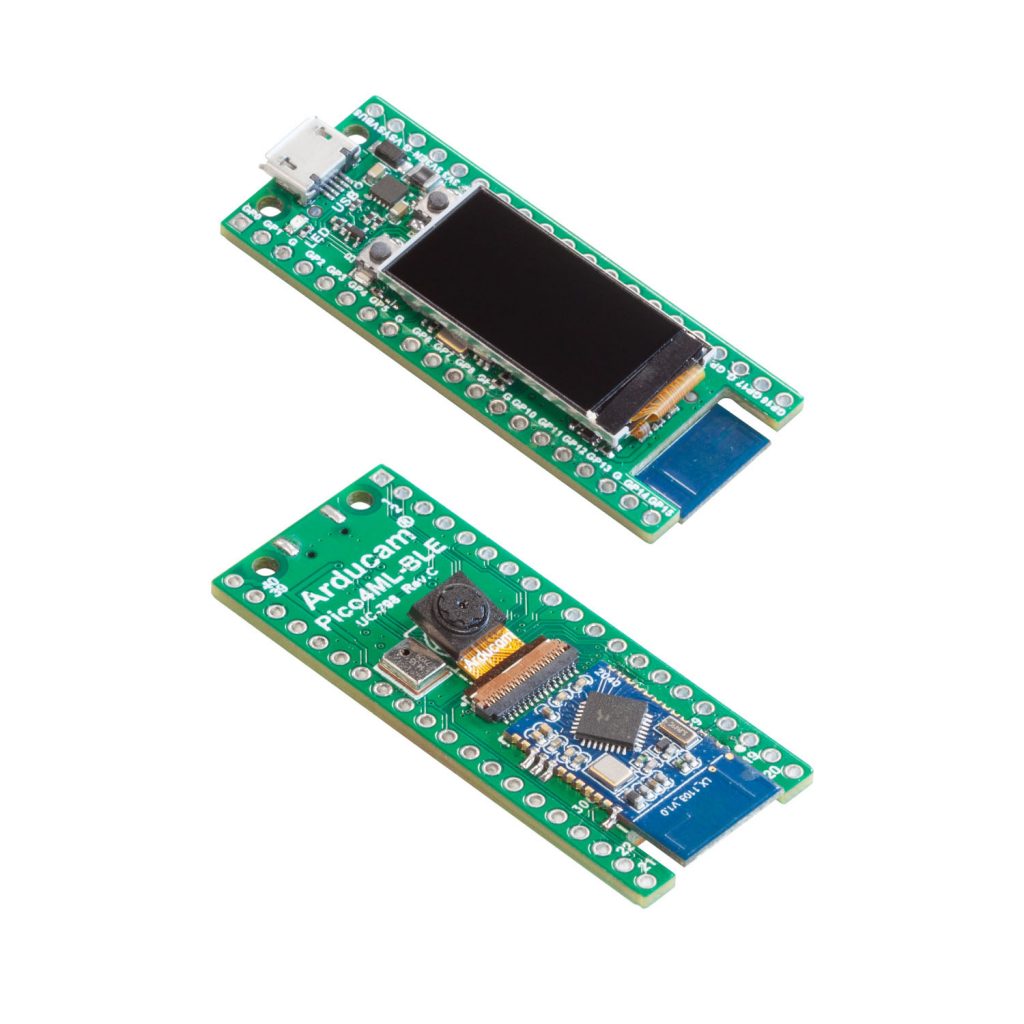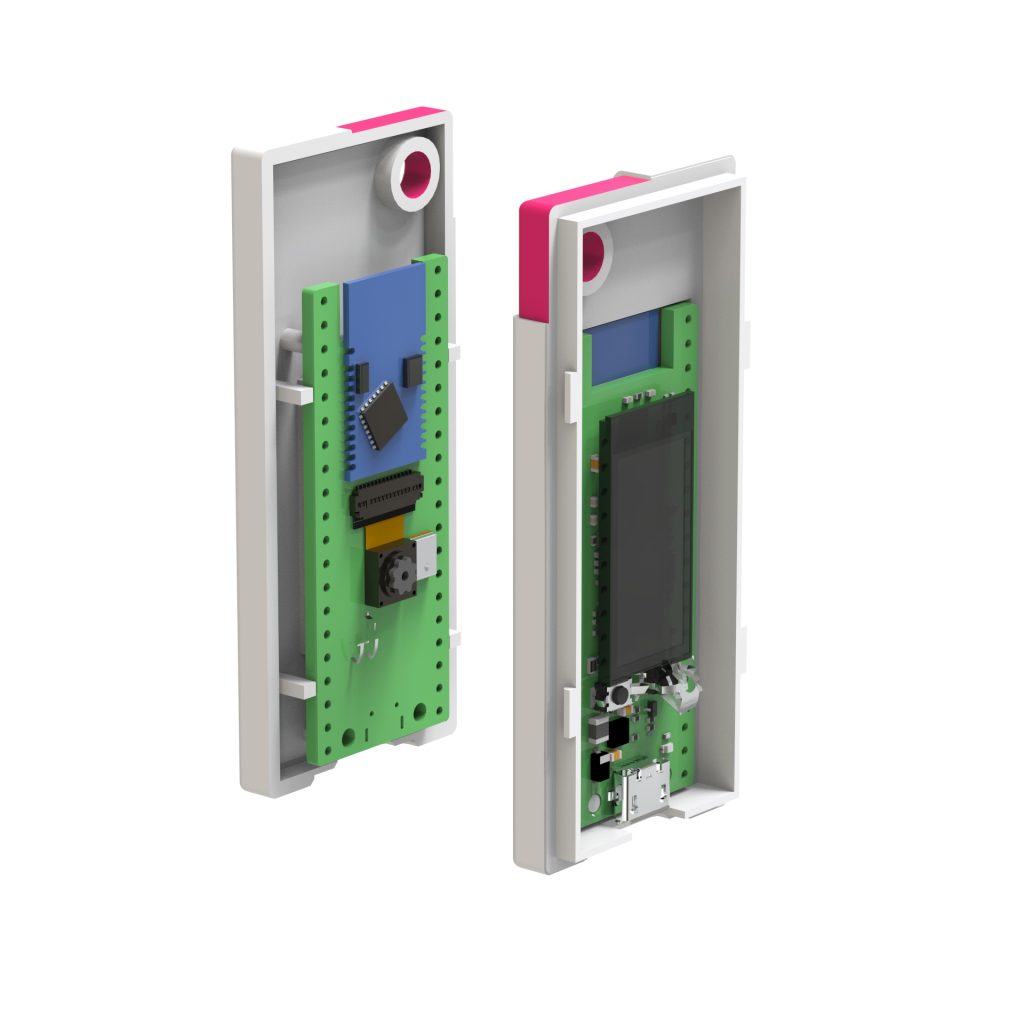Pico4ML by Arducam
On-Device Machine Learning at your Fingertips
The single-board microcontroller – powered by Raspberry Pi’s RP2040 chip – to support all Tensorflow Lite Micro tiny machine learning examples with an onboard camera, screen, microphone, and IMU. Run without wiring, or even untethered.
📝 Reported by:
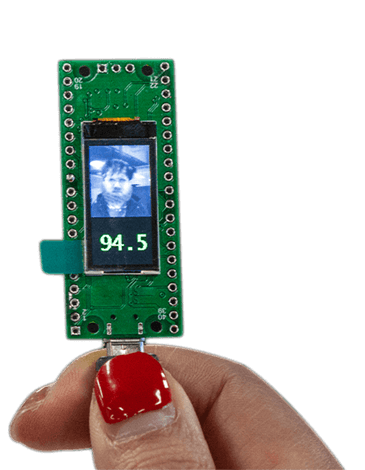
An RP2040 Based TinyML Dev Board
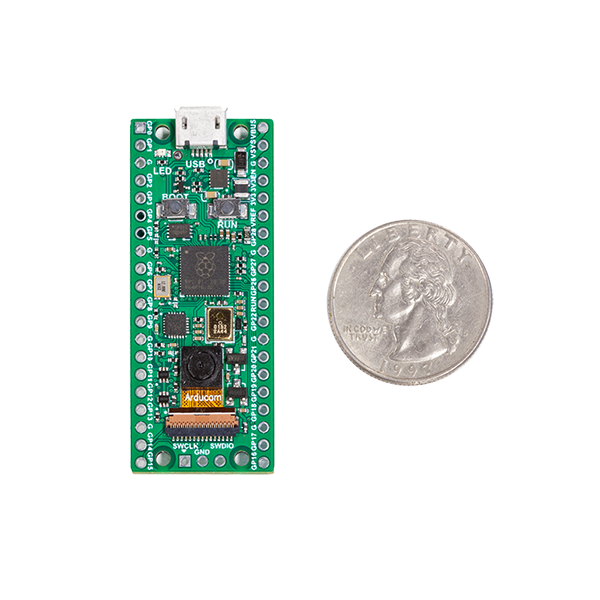
- Microcontroller: Raspberry Pi RP2040
- IMU: ICM-20948 (low power)
- Mono channel microphone w/ direct PCM output
- Buttons: Reset & Boot
- Camera Module: HiMax HM01B0, Up to QVGA (320 x 240)
- Screen: 0.96 inch LCD SPI Display (160 x 80, ST7735)
- Operating Voltage: 3.3V
- Current Draw (standby): 40mA
- Current Draw (running ML models): 60mA
- Input Voltage: VBUS: 5V +/- 10%. VSYS Max :5.5V
- Length: 51 mm
- Width: 21 mm
- Full Specs >
QVGA Camera Module
A QVGA camera module with ultra-low power consumption, configurable 1-bit video data serial interface with video frame and line sync, and the monochrome sensor makes image processing an easy part for most machine vision applications.
0.96 inch LCD
The small TFT display at the back of Pico4ML is a 160×80 LCD, it’s connected to the board through the SPI interface, you can do a live preview of the camera, or display the results of any of the your ML models in real-time.
Onboard Microphone & IMU
The audio chip on the Pico4ML is capable of directly outputting PDM (Pulse-density modulation) signals, this integration allows the RP2040 to receive audio input, and it’s great for all the speech/voice recognition models. Motion tracking is also a built-in feature, the 2.5 mW low-power 9-axis IMU we used is just another ideal match for the RP2040 chip.
Open Source
Arducam Pico4ML is completely open-source, all its codes, design files, and schematics will be made available for anyone to use, rebuild or modify.
Pico4ML Design Files, Schematic & Codes
Board 3D Model >
Board Schematic >
Pico4ML User Manual >
Enclosure 3D Model >
Pico & Pico4ML Arducam Examples >
SPI Camera Driver for Pico >
Pico/RP2040 is ready for machine learning. Are You?
The community is ready for machine learning on RP2040. Are you?
Ooh, the ArduCam Pico4ML(!!!!) sounds super interesting. New class of hobbyist in-device image processing ahead? SIngle low power ‘human’ detection would be STUNNING. https://t.co/NKpkqN46gc
— ʎɐʍollɐפ ʇʇoɔS ˙ɹp (@scottgal) March 5, 2021
Wow, the Pico4ML from @ArducamOfficial could be a game changer for introductory machine learning education with onboard camera and display #tinyML #AI4K12 https://t.co/hgegO5eQNY https://t.co/Wc9I9jNLY7
— Hal Speed (@HalSpeed) March 4, 2021
Well, I have joined the waiting list of @ArducamOfficial. What about you the #Tinyml community.#TensorFlow #arducam #raspberrypipico #MachineLearning pic.twitter.com/An3vuytbJa
— naveen manwani (@NaveenManwani17) March 7, 2021
Tensorflow Lite Micro Examples

Wake word detection
Microphone on board
“Hey, Google” “Alexa.” Use a pre-trained speech detection model to provide always-on wake-word detection using a tiny microcontroller.

Magic Wand
IMU on board
Wave it to cast several types of spells in one of the following three gestures: “Wing”, “Ring” and “Slope”.

Person Detection
Camera Module on board
Classify Images captured by a camera to recognize if a person is in the camera input or not
